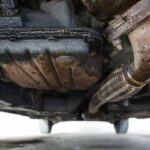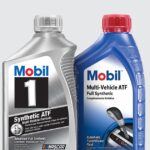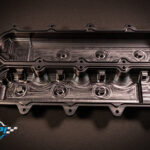
Toyota Corolla Leaking Water: Causes, Fixes & Prevention Tips

- Introduction
- Common Signs Your Toyota Corolla Is Leaking Water
- Understanding the Difference Between Water and Other Fluids
- Top Causes of Water Leaks in a Toyota Corolla
- Diagnosing the Source of the Leak
- DIY Fixes for Minor Leaks
- When to Seek Professional Help
- Preventing Future Water Leaks
- Cost of Repairing Water Leaks in a Toyota Corolla
- Safety Concerns Related to Water Leaks
- How Water Leaks Differ by Model Year
- Quick Tips to Protect Your Car
- Conclusion
- FAQs
Introduction
Noticed a suspicious puddle under your car after parking? If you drive a Toyota Corolla, water leaking might seem alarming—but it’s not always a sign of disaster. Sometimes it’s totally normal… and other times, it’s your car’s way of begging for attention. In this guide, we’ll break down what causes water leaks, how to find the source, easy DIY fixes, and when it’s best to let the pros step in.
Common Signs Your Toyota Corolla Is Leaking Water
Visible puddles under your car
Seeing clear liquid under your Corolla can be unnerving. But here’s the thing: it might just be condensation from the air conditioning system. If it’s colorless and odorless, that’s a good sign.
Damp or musty smell inside the cabin
If your car interior smells like a wet towel, that’s usually a red flag. It could mean water is finding its way into the cabin through bad seals or clogged drains.
Steam or smoke near the engine bay
Water or coolant dripping onto hot engine components can create steam. If you see this, don’t ignore it—it may signal a cooling system leak.
Understanding the Difference Between Water and Other Fluids
How to identify water vs. coolant
Water is typically clear, while coolant (antifreeze) often has a bright color—green, pink, or orange. Coolant also feels slick and has a sweet odor.
How to rule out oil and transmission fluid leaks
Oil has a dark, greasy appearance. Transmission fluid is usually red or brown. If the leak is truly just water, that narrows down your troubleshooting.
Top Causes of Water Leaks in a Toyota Corolla
Air conditioning condensation
This is the most common—and most harmless—cause of water puddles. When your AC runs, moisture from the air condenses and drains beneath your car. No fix needed here.
Clogged or damaged sunroof drain
If your Corolla has a sunroof, the drain tubes can get clogged with dirt or debris. When that happens, water backs up and drips into the cabin.
Faulty door or window seals
Over time, rubber seals dry out, crack, or shrink. When it rains, that water can sneak inside through the tiniest gaps.
Leaking heater core
A heater core leak is more serious. It usually shows up as damp floor mats, fogged-up windows, or that sweet smell of coolant.
Radiator or cooling system leak
If what’s leaking isn’t just water but coolant, you could be dealing with a radiator issue. This needs immediate attention—coolant leaks can lead to overheating.
Windshield or cowl panel leaks
Cracked windshields or damaged cowl panels can let rainwater into the dashboard area, often unnoticed until mold appears.
Diagnosing the Source of the Leak
Step 1: Check under the vehicle
Park your car on a dry surface and look beneath it. Identify where the puddle is forming—front, middle, or rear.
You may be interested in reading 2001 Toyota Corolla Common Oil Leaks
2001 Toyota Corolla Common Oil LeaksStep 2: Inspect the interior
Feel around the carpet and floor mats. If they’re damp, the leak could be coming from a seal or drain issue.
Step 3: Examine the engine bay
Pop the hood and look for wet spots, steam, or drips around the radiator, hoses, and coolant reservoir.
Step 4: Use UV dye or paper towel test
You can add UV dye to your coolant or simply place paper towels beneath the suspected area to trace the leak more precisely.
DIY Fixes for Minor Leaks
Unclogging the AC drain
A clogged AC drain can cause water to back up into the cabin. You can clear it by gently inserting a pipe cleaner or flexible wire into the drain tube under the car.
Sealing small gaps around doors and windows
Weatherstripping tape or silicone sealant can work wonders for tiny leaks. It’s a cheap fix that can save your interior.
Tightening radiator clamps
Sometimes, a loose clamp is all it takes to create a small coolant leak. A quick tighten with a screwdriver might solve it.
When to Seek Professional Help
Persistent coolant leaks
Coolant leaks aren’t something to mess with. If the leak continues after simple checks, it’s best to visit a mechanic.
Interior water damage
Mold, soggy carpets, or electrical issues inside the cabin need professional repair to avoid long-term problems.
Leaks affecting engine performance
If your engine starts overheating or running rough, don’t wait. A small leak can lead to big repairs down the line.
Preventing Future Water Leaks
Regular maintenance checks
Inspect your hoses, radiator, and seals every few months. Catching small problems early prevents bigger ones later.
Cleaning drainage systems
Sunroof and AC drains can clog over time. Regular cleaning—especially before the rainy season—keeps things flowing smoothly.
Replacing old weatherstripping
Rubber seals don’t last forever. Replacing them every few years keeps your Corolla watertight.
Cost of Repairing Water Leaks in a Toyota Corolla
DIY repair costs
Fixing minor issues like unclogging a drain or sealing small gaps can cost under $20 in materials.
You may be interested in reading 2001 Toyota Corolla Common Oil Leaks
2001 Toyota Corolla Common Oil Leaks Toyota Corolla Gearbox Oil Leak: Causes, Fixes & Prevention
Toyota Corolla Gearbox Oil Leak: Causes, Fixes & PreventionProfessional service costs
For bigger jobs—like radiator replacements or windshield resealing—expect to pay anywhere from $150 to $800 depending on the issue.
Mold and mildew buildup
Water inside the cabin can lead to mold, which affects air quality and your health.
Electrical system risks
Moisture and electronics don’t mix. Water can corrode connections and short out components.
Engine overheating
Coolant leaks reduce your engine’s ability to regulate temperature. This can lead to overheating and expensive engine damage.
How Water Leaks Differ by Model Year
Older models
Older Corolla models often face leaks from worn-out seals and corroded radiators.
Newer models
Newer versions are more resistant but can still experience AC condensation or sunroof drain issues.
Quick Tips to Protect Your Car
Parking strategy
Avoid parking under trees where debris can clog drains. Level surfaces help water drain properly.
Seasonal checks
Before winter or rainy seasons, inspect seals and drains. Prevention is always cheaper than repair.
Conclusion
A water leak in your Toyota Corolla can be anything from a harmless AC drip to a warning sign of a serious problem. The key is identifying the source early and taking the right steps—whether it’s a quick DIY fix or professional repair. Stay ahead of the problem with regular maintenance, and you’ll save time, money, and headaches down the road.
FAQs
1. Why is water dripping from under my Corolla after driving?
That’s likely just condensation from your AC system—a normal occurrence and nothing to worry about.
2. Can a water leak damage my car’s engine?
If it’s coolant leaking and not just water, yes. It can cause overheating and engine damage.
3. How can I tell if the leak is from the radiator?
Coolant leaks usually appear at the front of the car and have a sweet smell and bright color. You may also notice your temperature gauge climbing.
4. Is water leaking into the cabin dangerous?
Yes. It can cause mold, bad odors, and even electrical problems if not fixed.
You may be interested in reading 2001 Toyota Corolla Common Oil Leaks
2001 Toyota Corolla Common Oil Leaks Toyota Corolla Gearbox Oil Leak: Causes, Fixes & Prevention
Toyota Corolla Gearbox Oil Leak: Causes, Fixes & Prevention 2004 Toyota Corolla Oil Leak: Causes, Fixes & Prevention
2004 Toyota Corolla Oil Leak: Causes, Fixes & Prevention5. How often should I check for leaks?
A quick monthly visual check under your car and around the engine bay is a smart habit. Early detection saves you from expensive repairs.
If you want to know other articles similar to Toyota Corolla Leaking Water: Causes, Fixes & Prevention Tips you can visit the category Common Problems.
Deja una respuesta






More content of your interest